This article was co-authored by Zora Degrandpre, ND and by wikiHow staff writer, Eric McClure. Dr. Zora Degrandpre is a Natural Health Doctor and Licensed Naturopathic Physician in Vancouver, Washington. She is a grant reviewer for the National Institutes of Health and the National Center for Complementary and Alternative Medicine. She received her ND from the National College of Natural Medicine in 2007.
There are 10 references cited in this article, which can be found at the bottom of the page.
wikiHow marks an article as reader-approved once it receives enough positive feedback. In this case, 100% of readers who voted found the article helpful, earning it our reader-approved status.
This article has been viewed 105,233 times.
Calluses are areas of hardened skin develop from friction and pressure, often on the hands and feet. Most calluses occur on your feet and may become corns, which are calluses on your toes. However, you may also get calluses on your hands from using a tool or playing an instrument. In most cases, calluses are not a big deal and they can easily be addressed with a natural moisturizer and a pumice stone. However, call your doctor if you have diabetes, your callus becomes painful or inflamed, or your callus won’t go away.
Steps
Softening the Callus
-
1Soak the callus in warm water for 10-20 minutes twice a day. Get a tub, bin, or bucket big enough for your hand or foot. Fill the container up with warm water that doesn’t burn. While sitting on a chair or stool, immerse your foot or hand in the container for 10-20 minutes while you relax and do something else.[1]
- Continue doing this until the skin has softened up and relaxed a little. Even if this doesn’t remove the callus or corn completely, it will certainly make it more comfortable.
- This is a great reason to take a break and crack open a good book. You can also do this in front of the TV and catch up on your favorite show.
-
2Rub the affected skin with a moisturizing cream or lotion. Any lotion or cream that contains salicylic acid, ammonium, lactate, or urea will work well. After showering or soaking your feet, apply a small dollop of lotion or cream to the surface of the callus or corn. Use a smooth, soft circular motion to work the lotion or cream into the skin until the lotion and cream is no longer visible.[2]
- Don’t do this if the skin is punctured or you’re recovering from a wound—you’re better off letting the skin heal first before doing this.
- Over time, the lotion or cream will soften the skin and the callus or corn will either disappear or be soft enough to remove. The softer your skin becomes, the closer you are to getting rid of that annoying callus!
Advertisement -
3Wear callus pads to protect the skin and let it air out. Calluses and corns are often formed by friction or pressure. To protect the skin from friction and pressure, get a callus pad, which is a donut-shaped bandage designed for feet and hands. Place the pad over the callus or corn so that the affected area is resting in the center of the pad. The adhesive will keep it in place. Change your pads out every day to keep the skin clean and comfortable.[3]
- You can make your own pad by wrapping gauze into a circular shape and using athletic tape or skin tape to hold it in place.
- This is particularly important if the callus or corn is on the bottom of your foot where calluses can get really obnoxious.
Tip: Avoiding friction and pressure will keep the affected area from getting worse and will keep you comfortable while you’re working on softening the skin.
-
4Take a break from physical labor and sports while the skin heals. While you have a callus or corn, avoid putting too much pressure on your hand or foot. Avoid working out to keep the skin dry and sweat-free, and take it easy while you’re working on repairing your skin. Replace your callus pads daily and moisturize your skin after soaking it while relaxing at home.[4]
- If you tend to do a lot of physical activity in your spare time, this is a great excuse to finally catch up on that book or movie you’ve been trying to watch!
Removing the Dead Skin
-
1Use a pumice stone or emery board when your skin is clean and dry. After your skin has been softened up for 3-5 days, you can begin removing the callus or corn. Soak the skin you’re removing for 5-10 minutes in warm water before rubbing your skin dry with a clean towel or cloth.[5]
- If the callus or corn is still really hard, you may have an easier time doing this while the skin is wet or moist. If rubbing the skin hurts when it’s dry, try doing it while you’re in the shower.
- Do not attempt to remove a callus or corn if you haven’t softened the skin up for at least a few days. If you do, you may break your skin or cut yourself.
- A pumice stone is basically a chunk of volcanic rock that can remove dead skin without harming the healthy skin around it. You can use an emery board or soft nail file instead if you prefer.[6]
-
2Rub the callused skin gently to remove a layer of calloused skin. Hold the stone, board, or file flat against the corn or callus. Use gentle, straight strokes in a single direction to slowly wear away the dead skin. With a steady hand and constant, minimal pressure, rub off the top layer of the calluses to bring about healthy skin from underneath. Do this for 30-45 seconds to remove a little skin.[7]
- Always remember that the callus is your body’s response to increased pressure and friction. Rubbing too hard may result in more callus formation.
Warning: Do not remove the entire corn or callus in one sitting. It’s much safer to wear the skin down over time. If it starts to hurt while you’re removing the skin, stop. You’re either scrubbing the skin too hard or you don’t actually need to remove the dead skin—keep softening it and it may go away on its own.
-
3Moisturize your skin to repair it after removing the dead skin. Once you’ve removed a layer of dead skin, protect the fresh skin that you’ve exposed. Squirt out a pea-sized dollop of moisturizing cream or lotion into your hand. Then, rub it into the callus or corn using soft, circular motions. This will keep the new skin from hardening or getting damaged while you’re still working on removing the rest of the dead skin.[8]
-
4Repeat this process every day until your callus is gone. Be patient and work on removing the callus or corn for 30-45 seconds a day. With every use of the pumice stone or emery board, you’re removing a fraction of the dead skin. Over time, you will completely remove it and your skin will naturally heal on its own.[9]
- You can tell when you’re done by feeling the skin. If the skin is uniform, soft, and it matches the rest of your skin, you’re done!
-
5Avoid cutting or shaving off the dead skin. Since the skin is hardened, you may not feel anything when you touch your callus or corn. While you may be able to cut or shave the skin off, this is a terrible idea. It can cause an infection or laceration injury. In addition, you can easily cut too deeply or at the wrong angle. You may require medical attention if you do this.[10]
Preventing Calluses from Forming
-
1Examine your skin regularly for calluses and moisturize as needed. Monitor your skin for changes that might indicate a callus is forming. Look for discolored or yellow skin that feels harder. Use moisturizing cream or lotion to refresh the skin and keep it healthy. You can always visit a doctor, dermatologist, or podiatrist for a thorough examination if you want confirmation.[11]
- In most cases, regularly moisturizing a callus or corn before it forms is the best way to keep the skin from drying out.
-
2Cut back on the activity that’s causing the calluses. If you keep developing calluses or corns from a specific hobby or activity, reduce how often you do it. For example, if you keep getting calluses after playing the guitar for a long period of time, simply limit yourself to 10- to 15-minute playing sessions.[12]
- If you work with your hands and can’t avoid the physical labor, get yourself a pair of comfy gloves.
-
3Wear comfortable shoes that fit properly. Many people develop calluses on their feet when their shoes don’t fit. Since calluses are the skin’s response to pressure or friction, you need to remove the source of the pressure or friction. Get shoes with enough room for your feet to breathe a little. If you aren’t sure what size you should wear, go to a shoe store and ask for the clerk to size your feet.[13]
- When your shoes fit correctly, you should be able to wiggle your toes freely.
- Try on shoes before you buy them. Sometimes, the fit will be different depending on the manufacturer, so pay attention to how the shoe feels on your foot, not the size marked on the box.
Tip: Don’t buy shoes expecting them to stretch as you wear them. If they are too tight, go up a size. You normally can’t stretch a shoe more than 1/2 a size, which is not enough space for your feet.
-
4Protect your skin from calluses by wearing gloves, socks, and shoes. Wear gloves, socks and properly fitting shoes to protect your skin from calluses. Don’t walk around barefoot, as this increases the potential for callus formation.[14]
-
5Use orthopedic inserts to limit friction from your shoes. Orthopedic inserts are footpads specifically designed to ease the amount of pressure and friction your feet are exposed to. They are fantastic as they keep the callused area raised and cushioned, hence reducing friction by avoiding contact with footwear. They won't get rid of existing calluses, but they will help to prevent new ones from forming.[15]
- If you want some fancy custom inserts, visit a podiatrist to get a set made specifically for your feet!
When to Seek Medical Care
-
1Talk to your doctor before treating your callus if you have diabetes. Because diabetes puts you at high risk for slow healing sores, it’s important that you get your callus checked by a doctor. Even with home treatment, your callus can become an open sore that gets infected. This can make it hard to recover. Make sure you call or visit your doctor before trying to treat your callus.[16]
- Your doctor may recommend medical treatments to help you heal faster, or they might just monitor your progress while you do home treatments.
- Calluses are typically not serious, but they may lead to an infection if your skin breaks open.
-
2Consult your doctor if your callus becomes painful or inflamed. Typically, you won’t experience any pain from a callus. However, it may start to feel painful or swollen if you develop an infection or you have broken or injured skin. If you notice any pain or inflammation, see your doctor to make sure everything is okay.[17]
- Your doctor can offer you medical treatments to speed up your recovery.
- If your callus gets infected, it can quickly become a serious issue. Don’t hesitate to see your doctor.
-
3Visit your doctor if your callus doesn’t go away with home care. You can usually get rid of a callus on your own. However, sometimes they can be stubborn, especially if they’re very thick. Fortunately, your doctor can offer you additional treatments that may work for you. Talk to your doctor to find out if this is an option for you.[18]
- Tell your doctor how long you’ve had the callus and what you’ve done to try to remove it.
- Your doctor may want to do an X-ray to make sure you don’t have a foot abnormality that’s making the callus get worse.
-
4Discuss your treatment options with your doctor if the callus persists. In addition to home treatments, your doctor can do a medical procedure. This may include removing the top layer of the callus or using medication to dissolve the callus.[19]
Possible treatment options:
Trimming away the dry, excess skin
Applying a salicylic acid patch to dissolve the callus
Using shoe inserts to eliminate friction
Correcting foot issues using surgery (rare)
Warnings
- Home remedies involving baking soda, vinegar, castor oil, Epsom salt, and essential oils have not been thoroughly studied by the scientific community. At best, they’re just as effective as moisturizer and a pumice stone. At worst, they can be dangerous and potentially damage your skin.⧼thumbs_response⧽
- If you do not address painful corns or calluses, you may end up needing surgery if you allow the dead skin to really get out of hand. If the callus or corn hurts when you aren’t touching it, it’s a sign that you need to see a doctor.[21]⧼thumbs_response⧽
References
- ↑ https://www.aad.org/public/everyday-care/injured-skin/burns/treat-corns-calluses
- ↑ https://www.health.harvard.edu/pain/calluses-and-corns
- ↑ https://newsnetwork.mayoclinic.org/discussion/home-treatment-options-for-corns-and-calluses/
- ↑ https://www.urmc.rochester.edu/encyclopedia/content.aspx?contenttypeid=85&contentid=P00271
- ↑ https://www.health.harvard.edu/pain/calluses-and-corns
- ↑ https://newsnetwork.mayoclinic.org/discussion/home-remedies-corns-and-calluses/
- ↑ https://www.health.harvard.edu/pain/calluses-and-corns
- ↑ https://www.health.harvard.edu/pain/calluses-and-corns
- ↑ https://newsnetwork.mayoclinic.org/discussion/home-treatment-options-for-corns-and-calluses/
- ↑ https://www.aad.org/public/everyday-care/injured-skin/burns/treat-corns-calluses
- ↑ https://www.apma.org/Patients/FootHealth.cfm?ItemNumber=1346
- ↑ https://www.health.harvard.edu/pain/calluses-and-corns
- ↑ https://newsnetwork.mayoclinic.org/discussion/home-remedies-corns-and-calluses/
- ↑ https://newsnetwork.mayoclinic.org/discussion/home-treatment-options-for-corns-and-calluses/
- ↑ https://www.apma.org/Patients/FootHealth.cfm?ItemNumber=1346
- ↑ https://www.mayoclinic.org/diseases-conditions/corns-and-calluses/symptoms-causes/syc-20355946
- ↑ https://www.mayoclinic.org/diseases-conditions/corns-and-calluses/symptoms-causes/syc-20355946
- ↑ https://www.mayoclinic.org/diseases-conditions/corns-and-calluses/diagnosis-treatment/drc-20355951
- ↑ http://www.mayoclinic.org/diseases-conditions/corns-and-calluses/basics/treatment/con-20014462
- ↑ https://www.health.harvard.edu/pain/finding-relief-from-calluses-and-corns
- ↑ https://www.mayoclinic.org/diseases-conditions/corns-and-calluses/diagnosis-treatment/drc-20355951
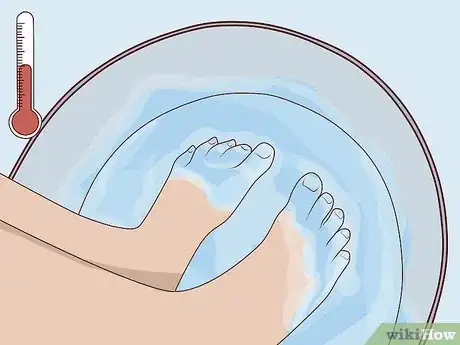
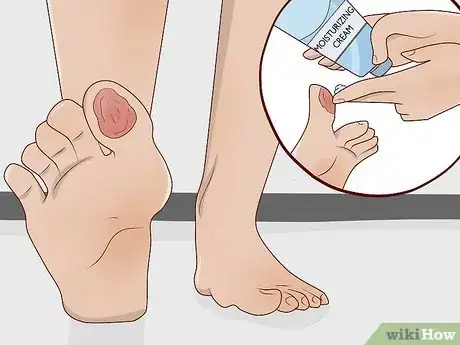
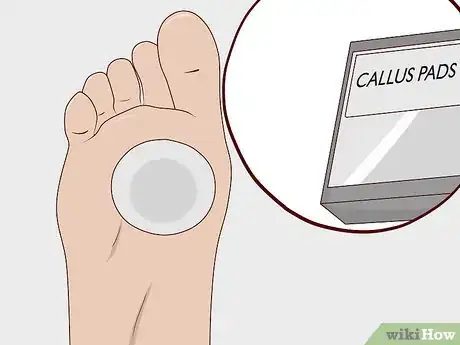
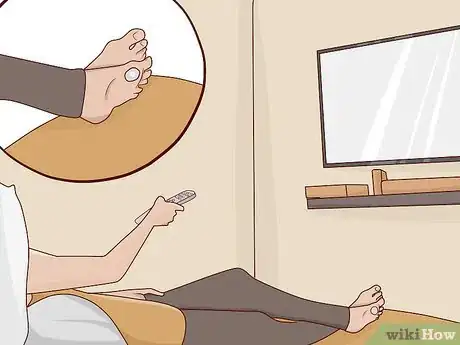
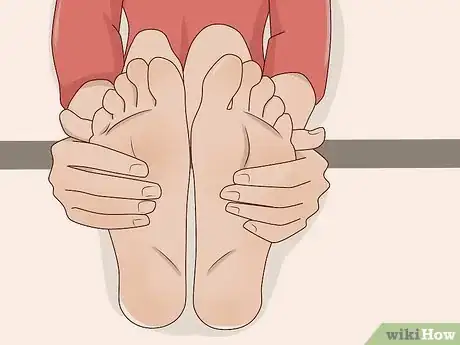

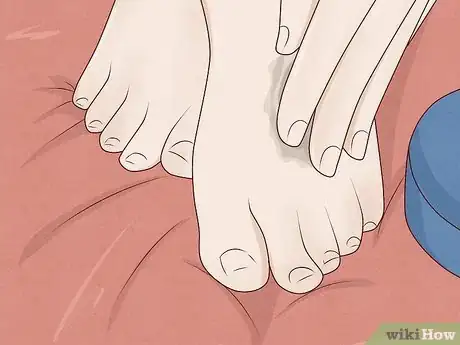
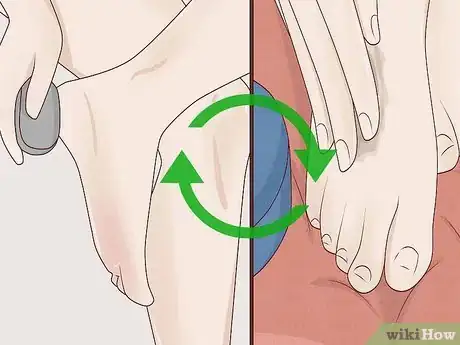
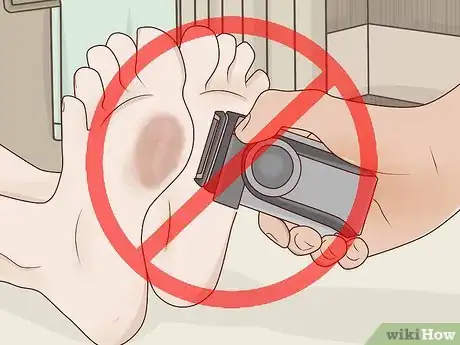
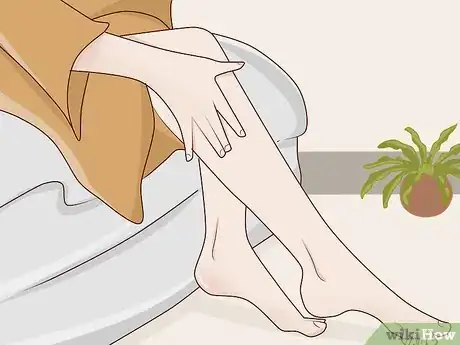
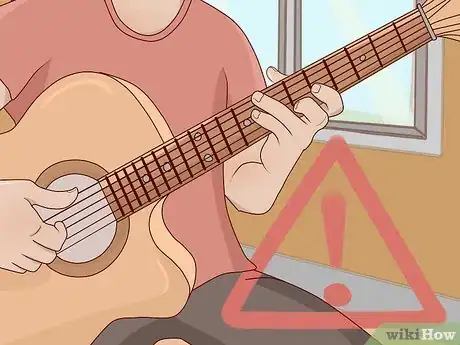
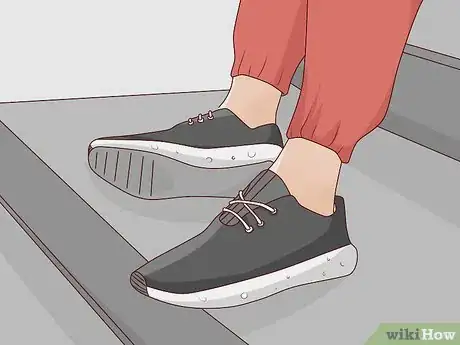
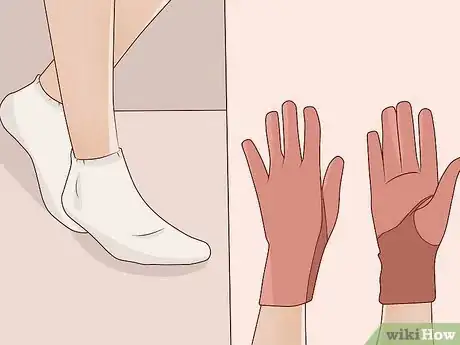
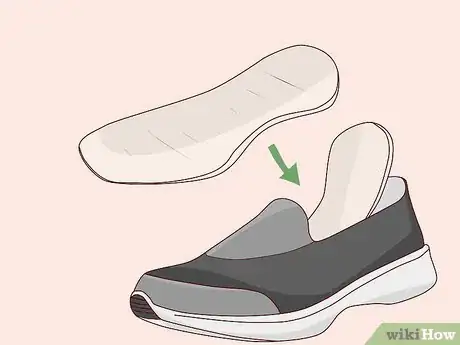
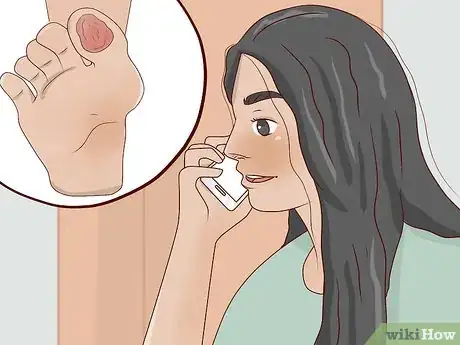
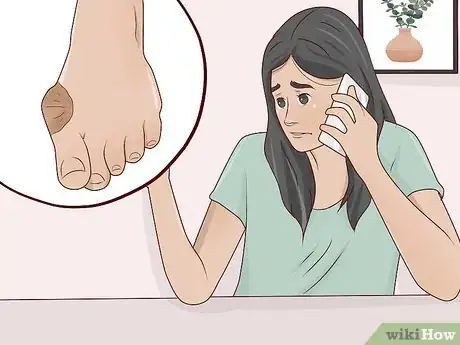
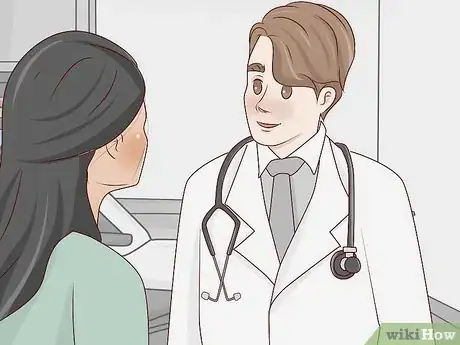
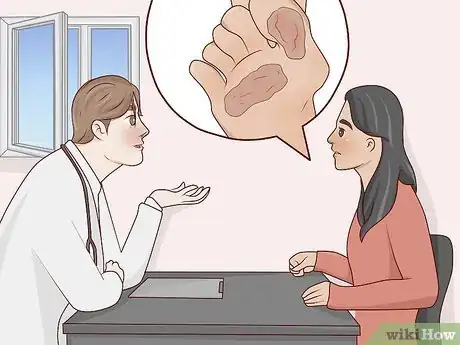
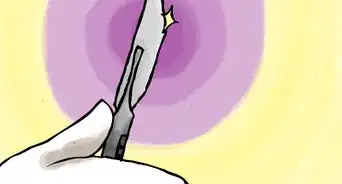


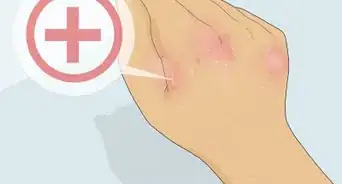

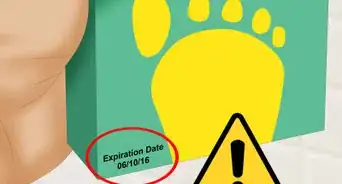
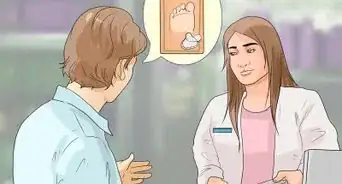
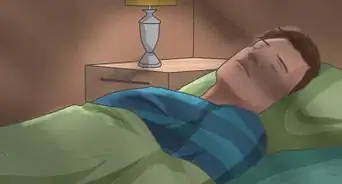
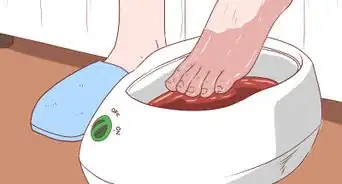

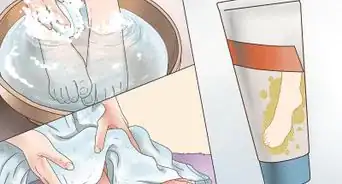
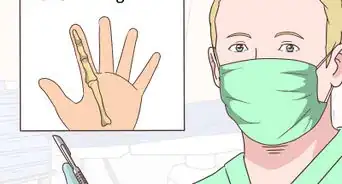

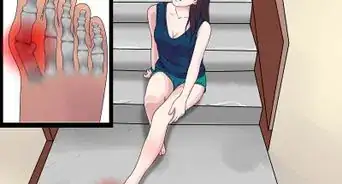











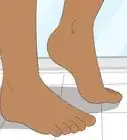

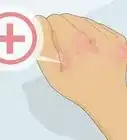




































Medical Disclaimer
The content of this article is not intended to be a substitute for professional medical advice, examination, diagnosis, or treatment. You should always contact your doctor or other qualified healthcare professional before starting, changing, or stopping any kind of health treatment.
Read More...